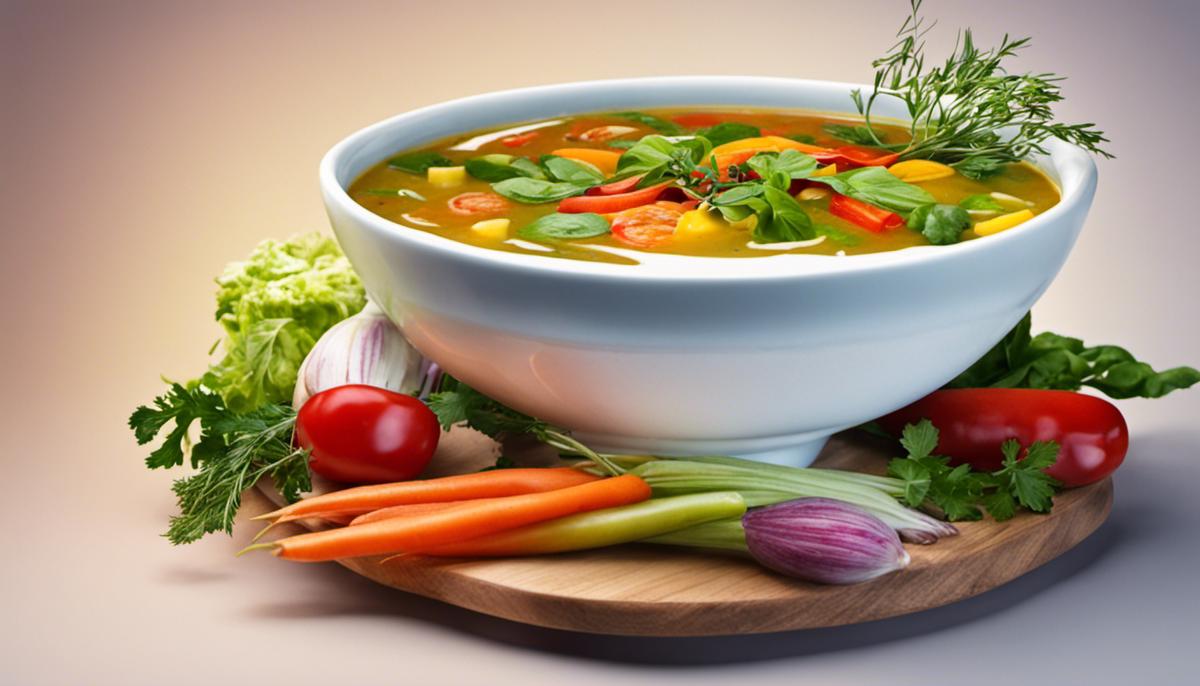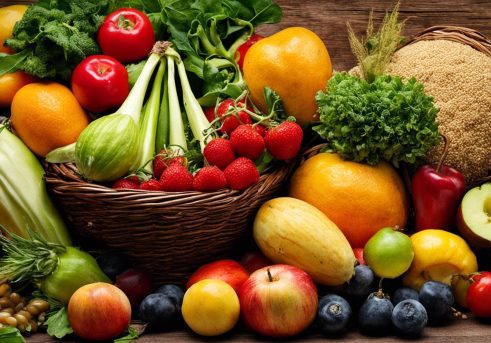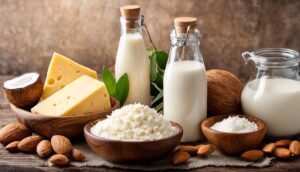As we dive into a realm where health is deemed the true wealth, we acquaint ourselves with the fundamentals of nutrition and dive into the art of making healthy soups. Learning about the varied nutritional components such as proteins, vitamins, dietary fiber and more, is quintessential in understanding how every ingredient you choose can add or subtract from your health. The focus of this exploration is to identify low sodium, high vitamin, fiber, and protein-rich ingredients like a plethora of vegetables, lean proteins, and hearty grains that elevate not just the flavor but also the health quotient of your soups. Moreover, understanding the techniques like sauteing, simmering, and blending can truly redefine your soup-making process, while ensuring that they remain brimming with nutrition.
Understanding Nutritional Values
Soup is a cornerstone of countless culinary traditions around the globe. Many of us have childhood memories of slurping homemade soup – possibly a cherished grandparent’s trademark recipe or a can of condensed chicken noodle on a sick day. And just as varied as soup recipes can be, so too are the techniques used to infuse nutritional value in each bowl. Let’s dive right in!
One of the first elements to consider when concocting a nutritious soup is the base. Bone broths are en vogue now, and for good reason! They’re known for their high collagen content which aids in digestion, immunity, and overall gut health. A good homemade vegetable broth shouldn’t be underestimated either. This is a great opportunity to pack in a vast array of veggies, herbs, and seasonings, each of which contributes different nutrients and health benefits.
Next up: protein! Incorporation of lean proteins like chicken, turkey, or even pulses and legumes, can transform a humble soup into a meal in itself. Besides being satiating, protein is key for repairing and building tissues. For vegetarian and vegan options, chickpeas, lentils, or tofu can provide the same punch of protein.
Don’t forget your fiber. It aids digestion by adding bulk to your diet and keeps you full longer, thereby helping control weight. Nearly all vegetables will add some fiber to your soup, but to really bump it up consider adding whole grains, legumes, or even a spoonful of chia seeds. They’ll soak up the broth and give a slightly thicker texture to some soups—which can be quite pleasant.
Now let’s talk fats. Just a drizzle of healthy fats, think olive oil or avocado oil, can elevate both the taste and nutrition of your soup. Yes, fats are higher in calories than proteins or carbohydrates, but they help absorb key nutrients such as vitamins A, D, E, and K. Plus, they have a unique ability to make food taste better.
Last but not least, herbs and spices are nutritional powerhouses, often overlooked for their health benefits. They may be medicinal (hello, turmeric!), metabolism-boosting (cayenne, anyone?), or simply rich in antioxidants (like rosemary and thyme). Infusing your broth with these seasonings can capitalize on their unique health-boosting properties and flavor enhancements.
Creating nutritious soup isn’t an exact science, but rather it’s about understanding what each ingredient brings to the bowl. It’s also part improvisation—you’re free to play around with combinations that complement each other and dance harmoniously on your palate. Now, armed with those insights, it’s time to hit the kitchen, craft that broth, chop those veggies, and start simmering some nutrition-forward, soul-warming soups.

Exploring Healthy Soup Ingredients
Whether you’re a culinary maestro or a beginner chef, crafting the perfect nutritious soup can be a mouthwatering adventure. There’s something beautiful about slowly simmering a pot of soup, combining a medley of ingredients together to create a final, soul-warming masterpiece. Let’s dive into a bowl of exploration, cooking up some high-nutrition ingredients commonly utilized in healthy soup recipes, each adding a delightful touch of taste, texture and tantalizing virtue to your kitchen escapades.
Inevitably, keeping the spotlight on vegetables is a key strategy in crafting a highly nutritious soup. Open the door for an assortment of vibrantly-colored vegetables – think bell peppers, broccoli, carrots, and spinach. These gems of nature are loaded with essential vitamins and minerals, from Vitamin C to potassium, boosting the nutritional profile of the soup dramatically. Let’s not forget that vibrant colors also make for a visually appealing bowl!
Mushrooms bring a unique, earthy flavor to the soup mix. A fabulous source of Vitamin D, selenium, and a host of antioxidants, mushrooms offer benefits that extend beyond their delightful umami profile. Popular edible varieties range from cremini, the subtly-flavored white button, to shiitake with their intriguing smoky note.
Garlic and onions aren’t just flavor powerhouses. They are your soup’s secret health enhancing agents. These humble pantry staples are known for their immune-boosting properties and are rich in antioxidants. When cooked slowly, onions develop a wonderful, sweet complexity that can transform something as simple as a soup into something exceptional.
Seafood, like salmon or shrimp, is another great protein source to consider. These seafood selections not only add a touch of luxury to your soup, they also serve up quite an impressive nutritional profile. Salmon is an excellent source of Omega-3 fatty acids and high-quality protein. Get creative without fear and experiment with a luscious salmon chowder or a fragrant shrimp bisque.
Don’t shy away from incorporating nuts and seeds into your soups. Whether you opt for crushed walnuts as a soup garniture or sesame seeds sprinkled on top, these little wonders offer a range of health perks. They’re loaded with heart-healthy fats, protein, fiber, and are known for their antioxidant properties.
Leafy greens like kale, Swiss chard or spinach bring splashes of color and heaps of nutrition to the soup. Packed with vitamins A, C, and K, they boost immune function and promote healthy vision and skin. Try them in minestrones or lentil stews, and get ready for a bowl bursting with nutrition.
Last but not least, tomatoes not only add a pop of color to your soup, they also offer a myriad of health benefits. Tomatoes are well-known for their high content of lycopene, a powerful antioxidant. Tomato-based soups, like the classic tomato basil or a delectable tomato bisque, brim with this heart-friendly antioxidant.
All these wonderful ingredients bring something special to the table, literally. Remember, nourishing your body with wholesome foods doesn’t mean you need to compromise on flavor – the joy is in finding that perfect balance. Enjoy every spoonful of your healthy and flavorful soup creations!

Soup Making Techniques
Availing the Nutrient-Packed Vegetables
Thriving on the kitchen’s culinary landscape, vegetables play a quintessential role in boosting the nutritional value of soups. The troupe of vegetables is a cavalcade of vitamins, minerals, antioxidants, fiber, and much more. The darker the vegetable pigment, the higher the nutrient content. Carrots, bell peppers, spinach, broccoli, and sweet potatoes are prime contenders that ought to make regular appearances in your soup compositions.
Unveiling the Myriad Wonders of Mushrooms
Mushrooms, often overlooked, pack an incredible nutrient bonanza. They hold a delectable mix of B vitamins, selenium, and gentle fiber, essential for a healthy metabolism and robust immunity. With the versatility of types like crimini, shiitake, maitake, and protrabello, soup makers can add both flavor and nutrition to their comfort bowl of warmth.
Garlic and Onions- The Touchstones of Soup Making
Garlic and onions, though humble, contribute powerfully to the enrichment of soup’s nutritional profile. They are sultry sources of antioxidants, especially the must-have allicin, that plays a formidable role in maintaining cardiovascular strength. Its antimicrobial properties are an added bonus.
Seafood- An Ocean of Advantages
Seafood gets you a gripping upper-hand in binding nutrition and sophistication in soups. Prawn, salmon, mussels or even seaweed contribute essential omega-3 fatty acids, lean protein, iodine, and a fleet of vitamins that can elevate the nutritional profile of your soup, without compromising the soothing aroma and taste of the sea.
Sprinkling the Magic of Nuts and Seeds
Nuts and seeds in soup recipes? Yes, you read it right! Groundnuts, almonds, flax seeds, chia seeds, sunflower seeds sprinkled as garnishes or subtly blended in the soup can amp up the protein, fiber, healthy fats and antioxidant content. Plus, they add a delightful crunch that breaks up the soup’s uniform texture.
Leafy Greens – Nature’s Nutrient Powerhouses
Leafy greens are a must-add to any soup if you’re craving a nutrient-packed meal. Spinach, kale, turnip greens, or dandelion greens bring along vitamins K, A, C, and fiber while delivering a very low calorie content. These oxygen-carrying compounds veritably pump life into your bowls of hearty soup.
The Tang of Tomatoes
Tomatoes in soup recipes lend a robust flavor and captivating color. They are a powerhouse of nutrients, mainly an antioxidant called lycopene, which is touted for its anti-cancer properties and heart-healthy benefits. They’re also rich in vitamin-C, potassium, and folate, which beckon comforting health benefits.
Balancing Act in Soup Making
Creating a nourishing soup is an art that stretches beyond throwing ingredients into a pot. Striking a balance between nutrition and flavor is often the tricky part. But, with flavorful herbs and spices, nutrient-dense veggies, lean proteins, and healthy fats, you can master the act. It takes time and experimentation to find out what combinations work best for your palette and health. After a few kitchen endeavors, every soup ladled out will truly be a masterpiece brimming with taste and nutrition. Remember, the bounty of good health lies just a soup bowl away!

The impressive art of making healthy soup lies not only in the individual ingredients but in the technique of blending these components in a way that every sip becomes a journey of health exploration. With a greater understanding of the nutritional values and the roles they play in our body, making the right choices becomes a delightful process rather than a chore. So, as you venture into your kitchen to cook your next meal, remember this – a pot of soup not just reduces your waistline but increases your life timeline.





